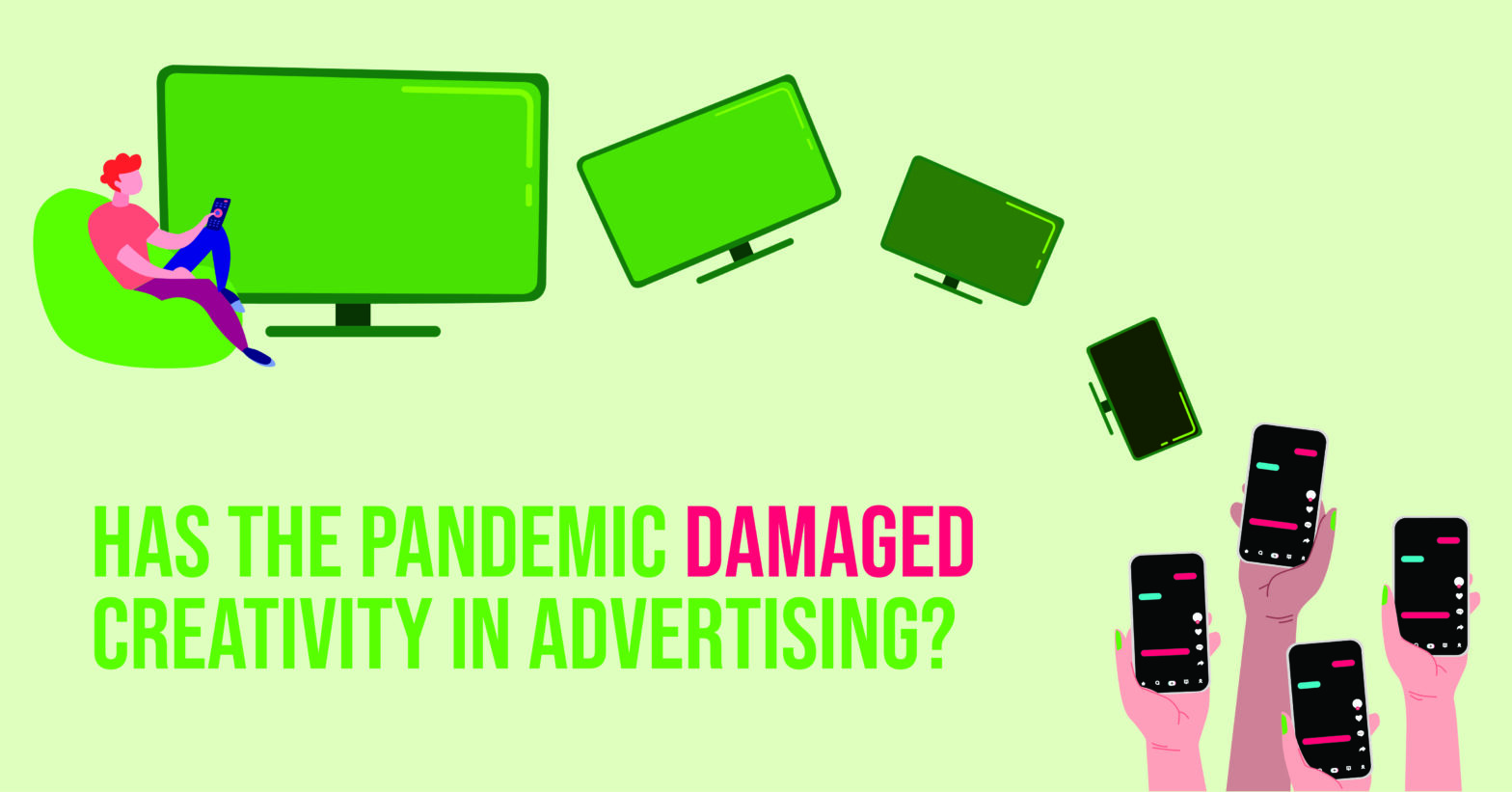Has the Pandemic Damaged Creativity in Advertising?

The pandemic has caused many disruptions to how we work, and the advertising industry is not immune to these changes. Global media brand Ad Age recently published their widely shared take, “How the Pandemic Damaged Creativity – and Why Remote Work is Only Part of the Problem,” about the decline of “good creative” since 2020. The article points to various possible reasons for this decline, including remote work, employee burnout, productivity culture, and even the shift in how brands promote products in the rapidly changing marketplace.
While the article raised some valid points, it also generated mixed responses from creative and strategic thought leaders at Planit.
What is “good creative”?
Jack Spaulding, executive director of strategy at Planit, argues that the Ad Age article focused on the wrong metrics based on what the contributors deemed, “good creative.”
“While creativity is essential in advertising, if our goal is to help clients sell more products or change consumer behavior, that should be how we measure what’s ‘good.’ If a campaign doesn’t move the needle, then it doesn’t matter how creative it is.”
Of course, “good creative” matters to Ad Age and Planit. It matters to all those who choose to be creative as a career, but “good” and “effective” are not interchangeable.
“As advertisers, we love to win awards and pat ourselves on the backs for designing a beautiful ad or an innovative website,” says Jack. “But we’re in a service business built to shift perceptions or market our clients’ services to people who aren’t us. If our creativity doesn’t change behavior, drive interest, or lead to a purchase, it’s not ‘good’ creative. No matter how many awards it wins.”
Identity Crisis
The group strategy director Ryan Smith suggested that the Ad Age article had an identity crisis. It indicated that the quality of creativity is suffering due to remote work. It claimed advertisers have fewer creative ideas than in prior years. And the metric for this lack of quality was based on observations in their agencies, Cannes award entries, and the lackluster response to Super Bowl commercials.
Ryan’s point is that based on these subjective insights, it’s lazy to conclude that there aren’t good creative campaigns, and worse, that it’s a symptom of where people do their work.
Katie Keating, quoted in the article, suggested that the problem may not be the creativity itself but advertising as a whole. This, Ryan points out, might be the better conclusion to draw.
“Consumers’ interests have shifted, and they’re more interested in raw, unfiltered opinions and ideas from everyday people. Content creators are the future of advertising, and agencies need to adapt to this shift in consumer behavior. Good creative is being produced, and it’s just not the big brands producing it.”
Fresh Ideas
Executive creative director, Jed Jecelin, suggests that there is a lot to consider beyond the Ad Age article’s surface-level observations. “The pandemic has caused a perfect storm of trends that have impacted the advertising industry. The way that clients engage with agencies has changed, and agencies need to adapt to a shift in consumer behavior.”
Jed also suggests that there are still plenty of fresh ideas out there. “Creativity has expanded beyond traditional formats, channels, and platforms, and it’s no longer limited to the office or to the big TV ads that represented big campaigns in the past. The critical thinking and lightning-fast reaction time required by marketers, advertisers, and creators today are like nothing we’ve ever seen.”
“Yes, this landscape requires a higher output volume,” says Jed. “The content sometimes has to fit into a box determined by the platform it is being placed into. We are still developing brands from scratch, we are still creating remarkable campaigns, and we are getting clients excited. I think there are many more kinds of creative people than there were in the past…not worse creative.”
Jed continues, “While the pandemic has certainly caused disruptions in the advertising industry, it’s essential not to conflate remote work with a lack of creativity. Instead, the industry needs to adapt to the changing trends and shift its focus to what’s important. Personal connections will always be the cornerstone of agency-client relationships and the effectiveness of ideas.”
Creativity is still essential in advertising, but measuring success based on the campaign’s impact is vital, not just how “good” agency creatives think it might be. Ultimately, agencies must remain nimble and adapt to these changing trends to stay relevant and successful.
So, has the pandemic hurt creativity? We prefer to say changed creativity.
A flashy billboard doesn’t reach non-commuters, the same way a professionally-produced cable commercial doesn’t reach cord-cutters. Creator-led content, such as TikTok videos and Instagram Reels, may look less polished but can be more creative and effective. True creativity continues to encapsulate the same marketing messages in targeted ways. Agencies like Planit are still generating big ideas; we’re just projecting them into smaller spaces.